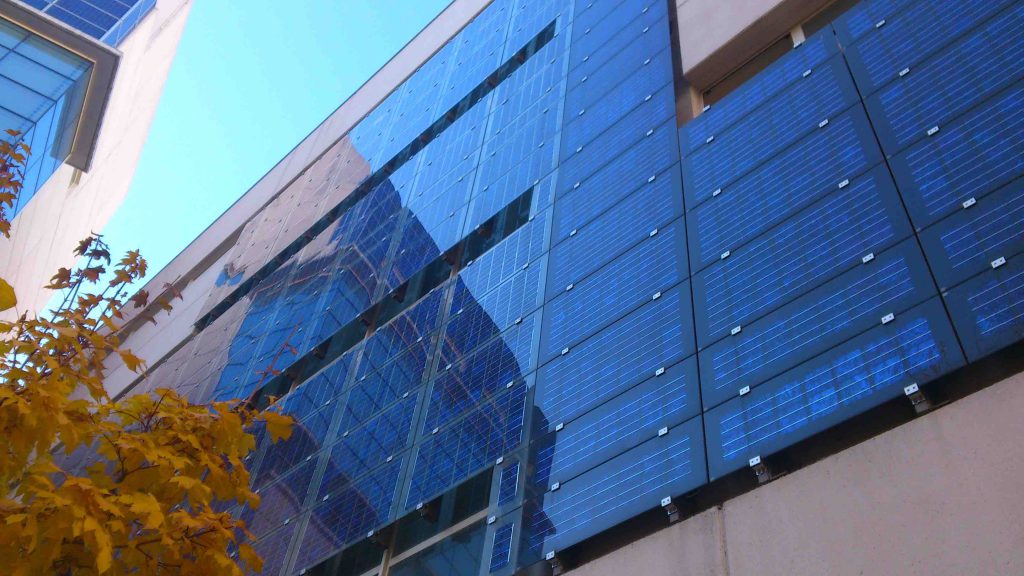Lean and green – an abstract of the green construction industry
Green construction, referring to both structure and the utilisation of environmentally sustainable and resource-efficient processes, no longer bears the stigma of companies run by starry-eyed idealists or business hippies. Although not a novel idea – green construction dates back as far as the Anasazi Native American tribes – our modern conception of the green building took off in the 1970s in reaction to substantial shortages in and spikes in the price of petroleum.
1. Harnessing the power of the sun
2. High-tech is the name of the game
3. Towards self-sufficiency
4. Best practices through collaborative work
5. The future of green construction
1. Harnessing the power of the sun
It all started when the scarcity of fossil fuels shifted the focus to solar energy, in particular, solar panels. Solar panels were used to make homes more environmentally friendly, initially in small numbers and at a high cost. Although the energy crisis came and went, photovoltaics stuck around, and the idea of eco-friendly construction started to take root. Designers and builders started to explore other options like recycling and using more durable and regenerative materials, more efficient insulation, and reducing environmental impact around building sites. When we speak of green construction now, we take into account a project’s entire lifetime; from sitting to energy, water, materials efficiency, operations and maintenance, waste reduction, and even deconstruction.

2. High-tech is the name of the game
At present, green construction has revolutionised entire industries, turning them into high-tech innovators. The greenest building is unlikely to be built if there is a cheaper alternative. In the construction industry, especially in the context of commercial buildings, keeping costs low is often key. Green construction has the ability to get clients and developers excited about a project, but costs and speed of construction are what ultimately wins projects for companies, as traditional building methods might be millions of dollars cheaper. Hence, green construction companies are forced not only to deliver ecologically compatible solutions but also offer them at low prices. This has forced the green branch of industries to keep innovating to compete. A good example of this innovation can be seen in phase-change materials used in insulation. Unlike typical insulation that opposes the flow of heat by trapping air into pockets between strands of fibrous material, phase-change materials discharge or absorb heat as they change between a liquid and solid state.
Another important development is the use of biodegradable materials. While recycled products are a good starting point, truly eco-friendly products need to break down naturally without releasing toxins. A great example is a biodegradable paint. The Old Fashioned Milk Paint Co. emulated and improved traditional methods of making paint by incorporating milk. Milk protein, calcium, and minerals form the basis of their products. Further, hemp, a low-THC relative of marijuana, is being used in several countries for a range of functions including insulation and building foundations.

3. Towards self-sufficiency
The trend towards zero-net-energy construction and maintenance does not stop in the construction of buildings itself. If buildings are to be truly green, they will need to provide for their own sources of power. Roof-mounted wind turbines are a promising answer for skyscrapers given the almost constant flow of air at higher altitudes and can cover a considerable share of a building’s power consumption. The real highlight, however, is solar power. Photovoltaic panels can be classically incorporated into a building’s façade, or even as transparent modules to replace traditional windows or skylights.

4. Best practices through collaborative work
The NuOffice in Munich, to be completed by year’s end is a paragon for self-sustaining green construction. Born out of a collaboration between the Fraunhofer Institute for Building Physics and the European energy-efficiency project DIRECTION, the NuOffice surpasses all thresholds for LEED platinum status. The designers’ goal was to maximize the complex’s passive use of energy, adding renewable energy sources to cover the building’s energy consumption. A district heating system in the building’s basement operates radiant heating and cooling schemes to keep energy consumption at a minimum. Additionally, the layout of the inner courtyard creates a natural draught through the building and maximizes sunlight with effects inside and outside of the complex.

5. The future of green construction
With clean energy technology being more advanced than ever before, eco-friendly behaviour no longer only benefits the earth but also your wallet. Even with still slightly higher initial costs, building developers are increasingly starting to endorse the long-term value of lower lifecycle costs of green construction. Growing at over 13% annually and expected to supersede US$260bn by 2019, there is also serious business to be made in the global green construction market.
The biggest market for eco-friendly construction is still in North America. However, the Asia Pacific region, led by India, China, Singapore, Malaysia, and Indonesia, are witnessing particularly high growth rates. Though still in the fledgling stage, government regulations in green construction will boost growth in the next few years.

Author: Laurenz Kalthoff

Easily find just the right early stage construction leads!
The fastest construction lead technology worldwide.









